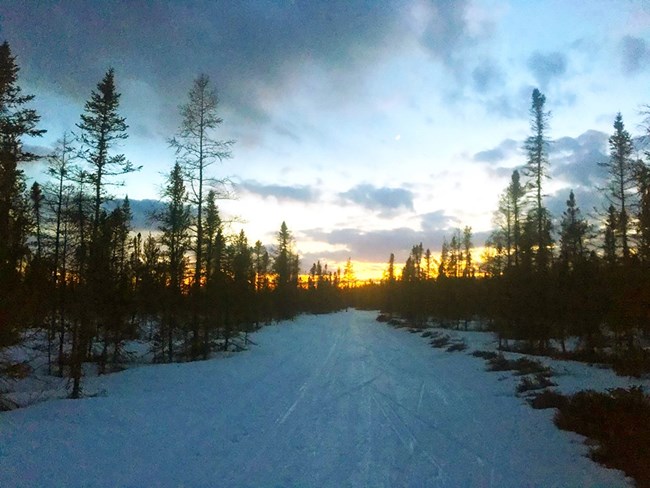Learn about NRCAs
The Natural Resource Condition Assessment (NRCA) Program provides framework, funding, and publishing support to parks to aid in the synthesis and documentation of natural resource conditions. Condition assessment reports are a tool to describe selected park resources, and record a snapshot of their current condition, identify trends, and identify potential or current threats and stressors. Understanding the condition and trend of natural resources is key for parks and NPS planners to appropriately prioritize and allocate stewardship resources.

NPS/M. Challeen.
Traditional NRCA Report: 2015
In an effort to better understand and manage the natural resources present in this park, a Natural Resource Condition Assessment was conducted and published in 2015. Representatives from the National Park Service and the University of Wisconsin – Stevens Point collaborated to determine park needs and available data. This team chose six resource topics and their corresponding indicators to evaluate for this assessment:
- Disturbance regimes |
||
- Landscape condition |
||
- Biotic condition |
||
- Physical and chemical condition |
||
- Ecological processes |
||
- Hydrology of the Rainy Lake watershed |
The assessment revealed that the conditions of these resource topics varied throughout the park. The physical and chemical condition resource topic had the greatest number of indicators of significant concern, while the hydrology and landscape resource topic indicators were mostly good. Biotic resource topic indicators were mixed. Natural resources and resource indicators at Voyageurs National Park are affected by activities and processes at scales ranging from local to global. Recreational users may be responsible for improper human waste and trash disposal and the spread of invasive species such as the spiny water flea. In addition, climate change could have significant effects on Voyageurs National Park’s ecosystems and is a global phenomenon. Park resource managers will need help from local, state, federal, and international agencies and groups to address the threats to its airshed and its terrestrial and aquatic ecosystems.
For other reports and natural resource datasets visit the NPS Data Store.
Source: NPS DataStore Collection 7765 (results presented are a subset). To search for additional information, visit the NPS DataStore.
Last updated: June 30, 2022
